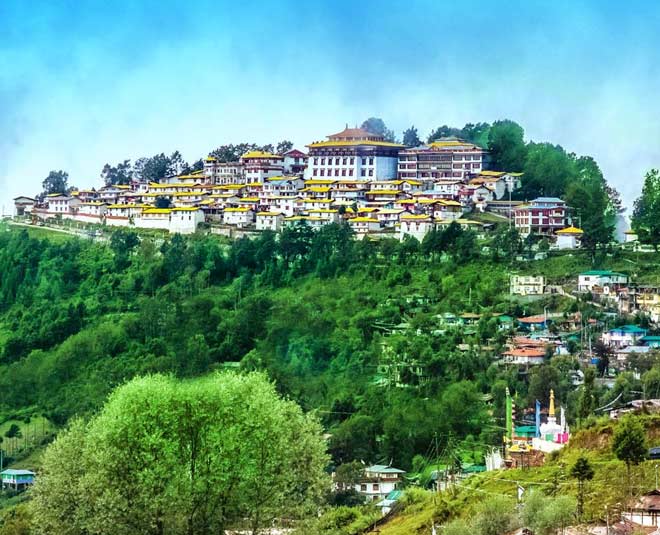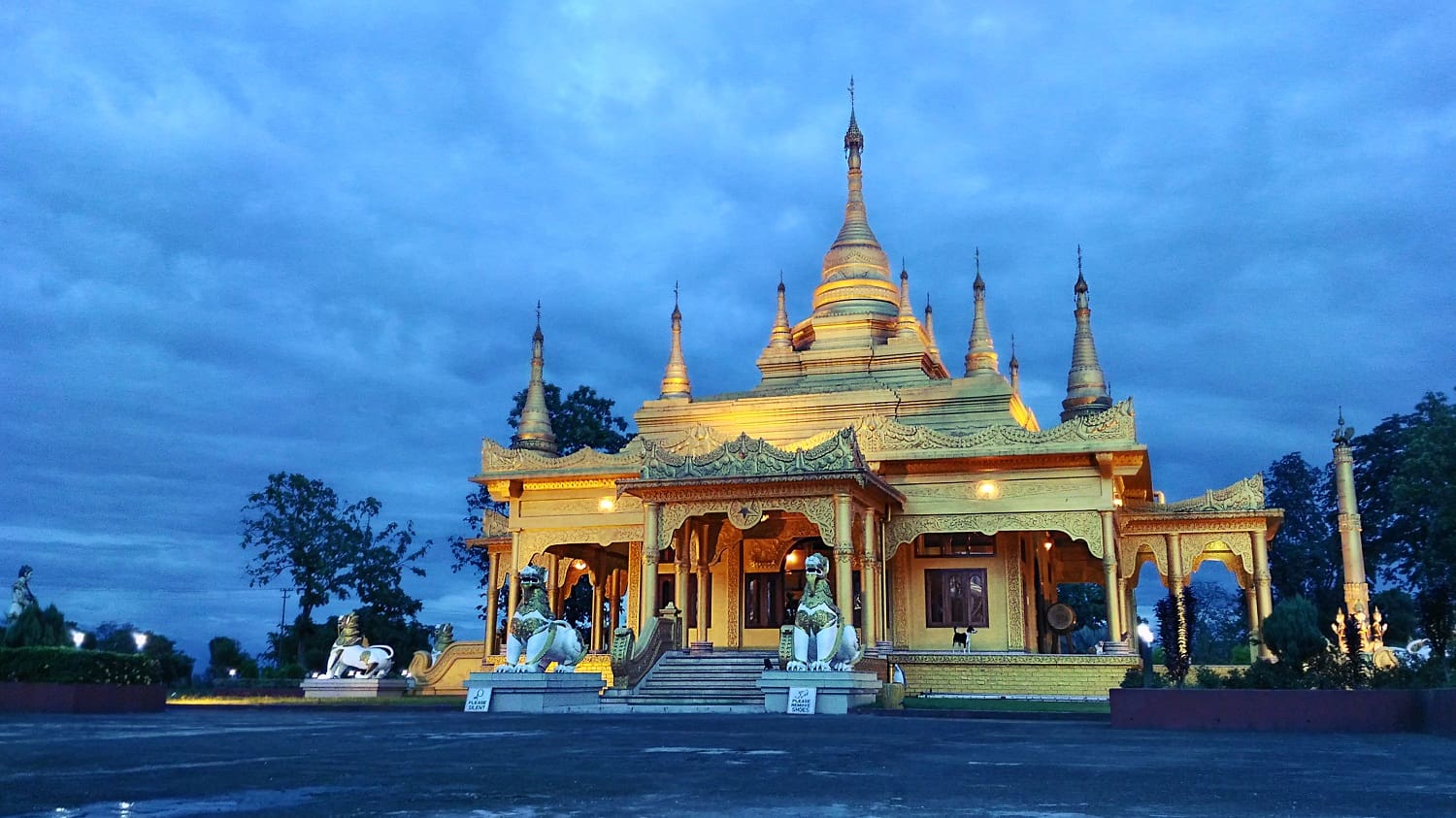Nestled in the northeastern corner of India, Lohit , a district in Arunachal Pradesh, is a land where nature reigns supreme. Known for its pristine rivers, lush forests, and breathtaking landscapes, Lohit offers an unparalleled escape into the lap of untouched wilderness. This region, steeped in mythological significance and cultural richness, is a haven for travelers seeking adventure, spirituality, and serenity. In this article, we will explore the top 5 places to visit in Lohit , each offering a unique glimpse into the natural beauty, history, and traditions of this enchanting destination.
1. Parshuram Kund: A Sacred Pilgrimage Site
Mythological Significance
Parshuram Kund , located on the banks of the Lohit River, is one of the most revered pilgrimage sites in India. According to Hindu mythology, this sacred kund (pond) is associated with Lord Parashurama, the sixth avatar of Vishnu. Legend has it that Parashurama washed his axe here after avenging the death of his father by killing the Kshatriya kings. The kund is believed to have purifying properties, and taking a dip in its waters is said to cleanse sins and grant salvation.
Spiritual Atmosphere
Every year during Makar Sankranti (mid-January), thousands of pilgrims from across the country gather at Parshuram Kund to take a holy dip. The festival transforms the site into a vibrant hub of devotion, with chanting, rituals, and communal feasts creating an electrifying atmosphere. The surrounding hills and dense forests add to the spiritual ambiance, making it a deeply moving experience for visitors.
Natural Beauty
The kund is surrounded by lush greenery and rolling hills, offering stunning views of the Lohit River flowing nearby. Early mornings are particularly magical, as mist blankets the area, creating a serene and mystical environment. For those who love photography, the interplay of light and shadow on the water makes for captivating visuals.
“Parshuram Kund is not just a religious site; it’s a sanctuary where faith meets nature.”
2. Brahma Dung Chung Lhakhang Monastery: A Spiritual Retreat
Historical Importance
The Brahma Dung Chung Lhakhang Monastery , located near Tezu, is one of the oldest monasteries in Lohit. Built in the 7th century, it holds immense historical and spiritual significance for Buddhists. According to local lore, Guru Padmasambhava (Guru Rinpoche), the founder of Tibetan Buddhism, meditated here during his travels through the region.
Architectural Splendor
The monastery’s architecture reflects traditional Tibetan design, with colorful murals, intricate wood carvings, and prayer flags fluttering in the breeze. Inside, statues of Buddha, Guru Rinpoche, and other deities adorn the prayer hall, creating a tranquil space for meditation and reflection. Visitors are welcome to attend morning prayers and witness monks engaging in daily rituals.
Cultural Immersion
The monastery serves as a center for Buddhist learning and hosts annual festivals like Losar (Tibetan New Year). During these celebrations, locals and tourists come together to enjoy traditional dances, music, and feasts. Participating in these events provides a deeper understanding of the region’s rich cultural heritage.
For those seeking mindfulness practices, the monastery offers meditation retreats led by experienced teachers. These programs focus on cultivating inner peace, compassion, and self-awareness, leaving participants feeling refreshed and inspired.
“At Brahma Dung Chung Lhakhang, time seems to slow down, allowing you to connect with your inner self.”
3. Glow Lake: A Hidden Gem Amidst the Mountains
Scenic Beauty
Glow Lake , tucked away in the remote corners of Lohit, is a hidden gem that remains largely unexplored by mainstream tourists. Surrounded by towering mountains and dense forests, the lake offers a tranquil escape from the hustle and bustle of city life. Its crystal-clear waters reflect the surrounding peaks, creating a mirror-like effect that is nothing short of mesmerizing.
Activities and Attractions
Visitors can enjoy activities such as trekking, birdwatching, and camping around Glow Lake. The trail leading to the lake passes through alpine meadows and rhododendron forests, making it a paradise for nature lovers. During spring, the blooming flowers paint the landscape in vibrant hues, while winter brings a blanket of snow, transforming the area into a fairy-tale setting.
For photographers, Glow Lake offers endless opportunities to capture the raw beauty of nature. From the shimmering waters to the majestic mountains, every frame tells a story of tranquility and wonder.
Local Legends
According to local folklore, Glow Lake is home to mystical spirits that protect the area. Villagers believe that respecting the lake’s sanctity ensures safe passage and good fortune. These stories add an element of mystery and intrigue to the already enchanting location.
“Glow Lake is a reminder of nature’s ability to inspire awe and humility.”
4. Dong Valley: The First Sunrise Point of India
Geographical Significance
Dong Valley , located near the tri-junction of India, China, and Myanmar, is famous for being the first place in India to witness the sunrise. Situated at an altitude of approximately 5,600 feet, the valley offers panoramic views of the surrounding mountains and valleys, making it a must-visit destination for early risers.
Witnessing the Sunrise
As dawn breaks, the horizon lights up with hues of orange, pink, and gold, casting a golden glow over the landscape. Watching the sun rise over the easternmost tip of India is a surreal experience that fills you with a sense of accomplishment and wonder. Many visitors camp overnight near the valley to ensure they don’t miss this breathtaking spectacle.
Adventure and Exploration
The journey to Dong Valley involves traversing rugged terrains and crossing rivers, making it an exciting adventure for trekkers and off-road enthusiasts. Along the way, you’ll encounter diverse flora and fauna, including rare species of birds and medicinal plants. The region’s isolation ensures that its natural beauty remains pristine and untouched.
Cultural Insights
The valley is home to the indigenous Mishmi tribe, known for their unique customs and traditions. Interacting with the locals provides valuable insights into their way of life, including their reliance on agriculture, hunting, and weaving. Visitors can purchase handmade crafts and textiles directly from artisans, supporting the local economy.
“In Dong Valley, the first rays of sunlight symbolize new beginnings and endless possibilities.”
5. Wakro: A Gateway to Tribal Culture
Cultural Hub
Wakro , a small town in Lohit district, serves as a gateway to the region’s tribal culture and traditions. Home to the Adi and Mishmi tribes, Wakro offers a fascinating glimpse into the lives of these indigenous communities. The town is dotted with traditional bamboo houses, vibrant markets, and ancient temples, showcasing the rich cultural tapestry of the region.
Exploring Tribal Life
Visitors can stay in homestays run by local families, gaining firsthand insights into their daily routines, cuisine, and rituals. Meals often include traditional dishes like pika pila (fermented bamboo shoot curry), apong (rice beer), and smoked meats. Sharing meals with the hosts fosters a deeper connection to the community’s way of life.
Festivals and Celebrations
Wakro hosts several festivals throughout the year, including Solang and Reh , which celebrate harvests, ancestors, and nature. These events feature traditional dances, music, and elaborate costumes, providing a vibrant showcase of tribal culture. Participating in these celebrations allows visitors to immerse themselves in the joyous spirit of the region.
Nature Trails
Surrounding Wakro are numerous nature trails that lead to waterfalls, caves, and viewpoints. One popular spot is the Kaho Waterfall , a cascading stream that plunges into a rocky pool below. The cool mist and soothing sounds of the waterfall create a refreshing escape from the heat.
“Wakro is a living museum where tradition and modernity coexist harmoniously.”
Why Lohit Should Be on Your Travel Bucket List
Lohit is a destination unlike any other—a place where nature, culture, and spirituality converge to create unforgettable experiences. From the sacred waters of Parshuram Kund to the breathtaking vistas of Dong Valley, each location offers a unique perspective on this remarkable region.
Whether you’re marveling at the craftsmanship of local artisans, spotting rare wildlife in Glow Lake, or savoring the flavors of authentic tribal cuisine, Lohit promises memories that will linger long after your journey ends.
“Lohit is more than a destination—it’s a journey into the heart of India’s untamed wilderness.”
Frequently Asked Questions (FAQs)
1. What is the best time to visit Lohit?
The best time to visit Lohit is between October and April when the weather is pleasant and ideal for sightseeing.
2. How do I reach Lohit?
Lohit is accessible by road and air. The nearest airport is Dibrugarh Airport in Assam, followed by a road journey to Tezu, the district headquarters.
3. Are there accommodation options in Lohit?
Yes, Lohit offers a range of accommodations, including government guesthouses, homestays, and basic lodges.
4. Is Lohit safe for solo travelers?
Absolutely! Lohit is a safe and welcoming destination for solo travelers, with friendly locals and efficient transportation systems.
5. Can I cover all five places in one trip?
While it’s possible to visit some places in a single trip, we recommend spending at least five days to fully appreciate the diversity of Lohit.
6. Are these places family-friendly?
Yes, all five destinations are family-friendly and offer activities suitable for children, adults, and seniors.
7. Do I need a guide to explore Lohit?
While not mandatory, hiring a local guide enhances safety and provides valuable insights into the region’s history, culture, and hidden gems.
8. What should I pack for a trip to Lohit?
Essential items include sturdy trekking shoes, warm clothing, rain gear, sunscreen, sunglasses, a camera, and a first-aid kit.
9. Are permits required to visit Lohit?
Yes, Inner Line Permits (ILPs) are required for non-residents of Arunachal Pradesh, which can be obtained online or through designated authorities.
10. Can I shop for souvenirs in Lohit?
Yes, Lohit is famous for its handmade crafts, bamboo products, and tribal jewelry, making it a great place to shop for unique souvenirs.









